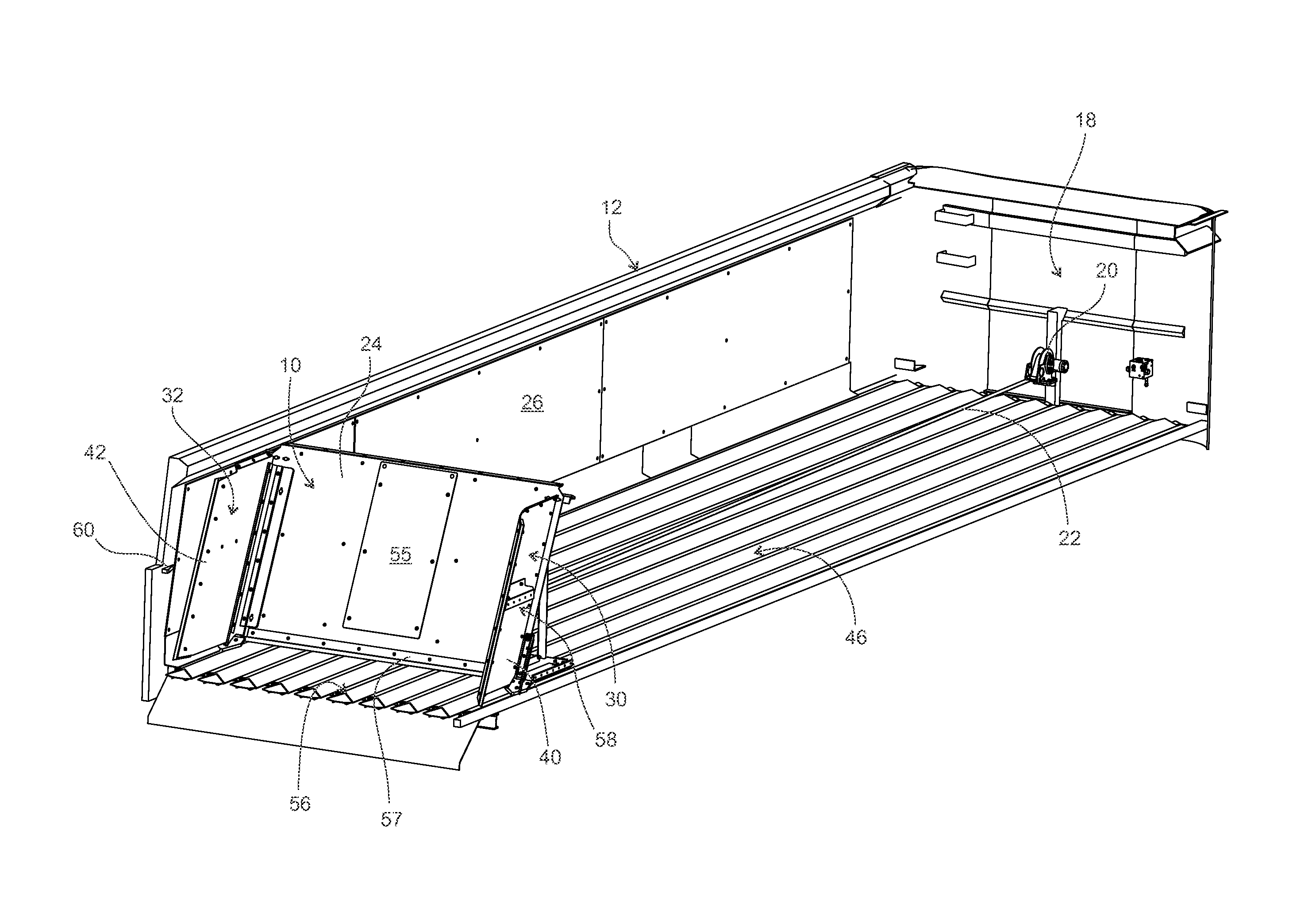Moving cleanout for reciprocating conveyor system
a conveyor system and moving cleanout technology, applied in the field of conveyor systems, can solve the problems of allowing a certain amount of material to pass (or leak past), sometimes buried end of the tarp, and affecting the overall cleaning function of the tarp, so as to improve the overall cleaning function
- Summary
- Abstract
- Description
- Claims
- Application Information
AI Technical Summary
Benefits of technology
Problems solved by technology
Method used
Image
Examples
Embodiment Construction
[0040]Referring now to the drawings, and first to FIG. 1. Shown generally at 10 is a moving headboard system (“moving headboard”) constructed in accordance with the invention.
[0041]In FIG. 1, the headboard 10 is shown at the aft end of a conventional trailer, indicated generally by arrow 12. This type of trailer 12 would be very familiar to a person having involvement with the trucking industry and knowledge about how reciprocating floor systems are built into the floor beds of trailers.
[0042]Trailers of this type are typically pulled by semi-trucks or the like. In the figure, the trailer has a rear door 14 that is hinged to the back. As is common, the door 14 swings up when the trailer is unloaded. Also, as is common, the load is inched off the trailer 12 by the built-in reciprocating floor slat system. The load, in this case, is schematically illustrated at 16. It could be a pile of gravel, as a non-limiting example, although systems of this type are used to haul many different ki...
PUM
 Login to View More
Login to View More Abstract
Description
Claims
Application Information
 Login to View More
Login to View More - R&D
- Intellectual Property
- Life Sciences
- Materials
- Tech Scout
- Unparalleled Data Quality
- Higher Quality Content
- 60% Fewer Hallucinations
Browse by: Latest US Patents, China's latest patents, Technical Efficacy Thesaurus, Application Domain, Technology Topic, Popular Technical Reports.
© 2025 PatSnap. All rights reserved.Legal|Privacy policy|Modern Slavery Act Transparency Statement|Sitemap|About US| Contact US: help@patsnap.com



